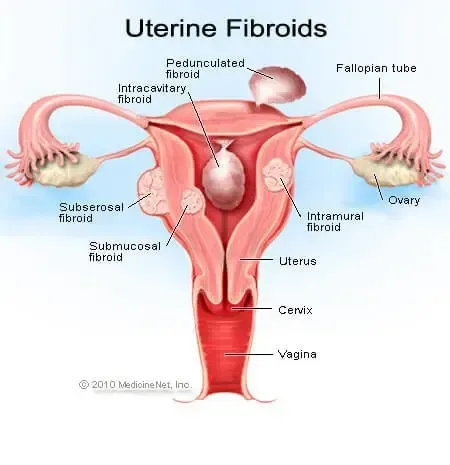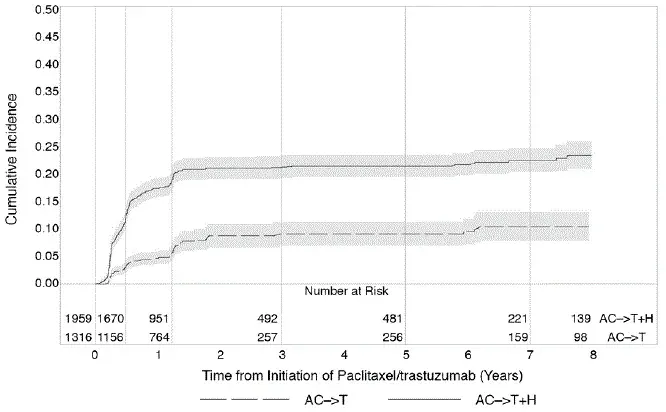Pramipexole
The Information On The Site Is Not Medical Advice. We Do Not Sell Anything. The Accuracy Of The Translation Is Not Guaranteed. Disclaimer
What Is Pramipexole and How Does It Work?
 Pramipexole can improve your ability to move and can decrease shakiness (tremor) stiffness slowed movement and unsteadiness.
Pramipexole can improve your ability to move and can decrease shakiness (tremor) stiffness slowed movement and unsteadiness.Pramipexole is used alone or with other medications to treat Parkinson's disease. It can improve your ability to move and can decrease shakiness (tremor) stiffness slowed movement and unsteadiness. It may also decrease the number of episodes of not being able to move ('on-off syndrome').
Pramipexole is a dopamine agonist that works by helping to restore the balance of a certain natural substance (dopamine) in the brain.
Pramipexole may also be used for a medical condition that causes an unusual urge to move the legs (restless legs syndrome - RLS) or a certain painful condition (fibromyalgia).
Pramipexole is available under the following different brand names: Mirapex and Mirapex ER.
What Are Dosages?
Dosages of Pramipexole
Dosage Forms and Strengths
Tablet
- 0.12 5mg
- 0.25 mg
- 0.5 mg
- 0.75 mg
- 1 mg
- 1.5 mg
Tablet extended release
- 0.375 mg
- 0.75 mg
- 1.5 mg
- 2.25 mg
- 3 mg
- 3.75 mg
- 4.5 mg
Dosage Considerations – Should be Given as Follows:
Parkinson Disease
- Immediate-release: 0.125 mg orally every 8 hours initially; gradually titrated upward at weekly intervals to target range of 1.5-4.5 mg/day orally divided every 8 hours
- Extended-release: 0.375 mg/day orally initially; if necessary maybe increased every 5-7 days first to 0.75 mg/day and then by increments of 0.75 mg/day; not to exceed 4.5 mg/day
Restless Legs Syndrome
- 0.125 mg/day orally 2-3 hours before bedtime initially; may be increased every 4-7 days up to 0.5 mg/day (every 14 days if CrCl 20-60 mL/min)
Dosage Modifications
Hepatic impairment: No dosage adjustments provided in the manufacturer's labeling; adjustment not expected; undergoes minimal hepatic metabolism
Renal Impairment
Parkinson disease
- Immediate release
- CrCl greater than 50 mL/min: Dosage adjustment not necessary
- CrCl 30-50 mL/min: 0.125 mg twice daily initially; not to exceed 0.75 mg three times daily
- CrCl 15-29 mL/min: 0.125 mg once/day; not to exceed 1.5 mg once/day
- CrCl less than 15 mL/min: Dosage adjustment not provided in manufacturer's labeling; not studied
- End-stage renal disease (ESRD) requiring hemodialysis: Dosage adjustment not provided in manufacturer's labeling; not studied
- Extended-release
- CrCl greater than 50 mL/min: Dosage adjustment not necessary
- CrCl 30-50 mL/min: 0.375 every other day; may increase to 0.375 mg once/day no sooner than 1 week after initiating therapy; may increase by 0.375 mg/dose not more frequently than every 7 days; not to exceed 2.25 mg once/day
- CrCl less than 30 mL/min: Not recommended
- End-stage renal disease (ESRD) requiring hemodialysis: Not recommended
Restless legs syndrome
- Immediate release
- CrCl greater than 60 mL/min: Dosage adjustment not necessary
- CrCl 20-60 mL/min: Dosage adjustment not necessary but the duration between titration should be increased to 14 days
- CrCl less than 20 mL/min: Dosage adjustment not provided by manufacturer's labeling; not studied
Dosing Considerations
- May switch overnight from immediate-release to extended-release tablets at same daily dose; dose adjustments may be required for some patients
Administration
- Extended-release: Swallow whole; do not chew crush or divide
- Discontinuing immediate- or extended-release: Taper off at a rate of 0.75 mg/day until the daily dose has been reduced to 0.75 mg; thereafter the dose may be reduced by 0.375 mg/day
What Are Side Effects Associated with Using Pramipexole?
There are some variations in side effects between early Parkinson advanced Parkinson and restless legs syndrome.
The incidence of some adverse drug reactions (e.g. dizziness accidental injury) is greater than 10% but comparable to placebo.
Common side effects of pramipexole include:
- Drowsiness
- Involuntary abnormal muscle movements
- Hallucinations
- Insomnia
- Dizziness
- Dizziness upon standing (postural hypotension )
- Nausea
- Constipation
- Abnormal dreams thoughts or vision
- Amnesia/forgetfulness/memory problems
- Confusion or thinking problems
- Paranoia or delusion
- Restlessness
- Weakness
- Dry mouth
- Urinary frequency
- Stomach pain
- Vomiting
- Headache
- Spinning sensation
- Swelling in your hands and feet
- Appetite or weight changes
- Blurred vision
- Sleep problems (insomnia)
- Impotence
- Loss of interest in sex
- Trouble having an orgasm
Serious side effects of pramipexole include:
- Extreme drowsiness
- Falling asleep suddenly even after feeling alert
- Sweating
- Lightheadedness/ fainting
- Hallucinations
- Muscle spasms
- Muscle pain or tenderness
- Muscle weakness with fever or flu symptoms and dark colored urine
- Increased urination
- Chest pain
- Cough with white or pink phlegm (mucus)
- Wheezing
- Shortness of breath (even with mild exertion)
- Swelling
- Rapid weight gain
- Loss of appetite
- Rapid weight loss
- Fast or uneven heartbeats
- Tremors
- Twitching or uncontrollable movements of your eyes lips tongue face arms or legs
Postmarketing side effects of pramipexole reported include:
- Neurologic: Abnormal behavior abnormal dreams compulsive shopping fatigue hallucinations (all kinds) headache pathologic gambling
- Cardiovascular: Hypotension (including fainting and postural hypotension )
- Metabolic: Increased eating (including binge eating compulsive eating and increased appetite) weight gain Syndrome of Inappropriate Antidiuretic Hormone Secretion (SIADH)
- Dermatologic: Skin reactions including redness rash itching hives
- Gastrointestinal: Vomiting
- Genitourinary: Sex drive (libido) disorders (including increased or decreased libido and hypersexuality)
This is not a complete list of side effects and other serious side effects may occur. Call your doctor for information and medical advice about side effects. You may report side effects to FDA at 1-800-FDA-1088.
What Other Drugs Interact with Pramipexole?
If your doctor has directed you to use this medication your doctor or pharmacist may already be aware of any possible drug interactions and may be monitoring you for them. Do not start stop or change the dosage of any medicine before checking with your doctor health care provider or pharmacist first.
Pramipexole has no known severe interactions with other drugs.
Pramipexole has serious interactions with at least 22 different drugs.
Moderate Interactions of pramipexole include:
- apomorphine
- bromocriptine
- cabergoline
- cimetidine
- clobazam
- digoxin
- levodopa
- lurasidone
- methyldopa
- procainamide
- quinidine
- ranitidine
- ropinirole
- tenofovir DF
Mild Interactions of pramipexole include:
- diltiazem
- memantine
- methyclothiazide
- quinine
- triamterene
- verapamil
This document does not contain all possible interactions. Therefore before using this product tell your doctor or pharmacist of all the products you use. Keep a list of all your medications with you and share the list with your doctor and pharmacist. Check with your physician if you have health questions or concerns.
What Are Warnings and Precautions for Pramipexole?
Warnings
This medication contains pramipexole. Do not take Mirapex or Mirapex ER if you are allergic to pramipexole or any ingredients contained in this drug.
Keep out of reach of children. In case of overdose get medical help or contact a Poison Control Center immediately.
Contraindications
- Hypersensitivity
Effects of Drug Abuse
- None
Short-Term Effects
- May cause sudden daytime 'sleep attacks;' inquire about factors that may increase risk of falling asleep including sleep disorders or taking sedating medications; caution patients about performing tasks requiring mental alertness; discontinue if there is evidence of sleep attacks; if decision is made to continue therapy advice patient not to perform dangerous activities requiring mental alertness.
- See 'What Are Side Effects Associated with Using Pramipexole?'
Long-Term Effects
- Possibility of unusual behavioral impulse patterns (e.g. compulsive gambling) may occur; hallucinations and psychotic-like behavior may occur.
- See 'What Are Side Effects Associated with Using Pramipexole?'
Cautions
- May cause sudden daytime 'sleep attacks;' inquire about factors that may increase risk of falling asleep including sleep disorders or taking sedating medications; caution patients about performing tasks requiring mental alertness; discontinue if there is evidence of sleep attacks; if decision is made to continue therapy advice patient not to perform dangerous activities requiring mental alertness.
- Dizziness upon standing (orthostatic hypotension) may occur particularly during dose escalation; monitor closely Parkinson patients being treated with dopaminergic agonists especially during dose escalation.
- Possibility of unusual behavioral impulse patterns (e.g. compulsive gambling) may occur; hallucinations and psychotic-like behavior may occur; risk increases with age; dose reduction or discontinuation may reverse these behaviors but not in all cases.
- In early Parkinson's disease dosages higher than 1.5 mg every 8 hours provided no additional benefit but increased adverse events.
- Use with caution in renal impairment; dose adjustment may be necessary; do not administer extended release tablets to patients with CrCl less than 30 mL/min or ESRD requiring hemodialysis.
- Augmentation or rebound of restless legs syndrome (RLS) may occur with therapy in RLS patients.
- The elderly may be more prone to adverse effects.
- Swallow whole; do not chew crush or divide extended release tablets.
- Events reported with dopaminergic therapy include high fever (hyperpyrexia) and confusion.
- Fibrotic complications reported with use; monitor closely for signs and symptoms of fibrosis; discontinuation of therapy may resolve complications but not in all cases.
- Risk of melanoma increases in Parkinson disease patients; monitor closely and perform periodic skin examination.
- Pathologic degenerative changes observed in retinas of albino rats during studies; significance in humans unclear.
- May cause or exacerbate dyskinesia; use with caution in patients with preexisting dyskinesias.
- Symptoms resembling neuroleptic malignant syndrome including elevated temperature muscular rigidity altered consciousness and autonomic instability reported with rapid dose reduction discontinuation or changes in therapy; taper dose to decrease risk of hyperpyrexia and confusion.
- Gradual discontinuance required over period of 1 week or longer; symptoms resembling neuroleptic malignant syndrome may occur on abrupt withdrawal.
- Risk of new-onset heart failure undergoing FDA evaluation (FDA safety announcement 9/19/2012).
Pregnancy and Lactation
There are no adequate data on the developmental risk associated with pramipexole therapy in pregnant women. There are no adverse developmental effects reported in animal studies in which pramipexole was administered to rabbits during pregnancy. Effects on embryo/fetal development could not be adequately assessed in pregnant rats however postnatal growth was inhibited at clinically relevant exposures.
In the U.S. general population the estimated background risk of major birth defects and of miscarriage in clinically recognized pregnancies is 2-4% and 15-20% respectively; background risk of major birth defects and miscarriage for the indicated population is unknown.
It is not known if pramipexole is secreted in breast milk. It may inhibit milk production. Discontinue pramipexole or do not nurse.
Medscape. Pramipexole.
https://reference.medscape.com/drug/mirapex-mirapex-er-pramipexole-343048
. Mirapex Side Effects Center.
https://www..com/mirapex-side-effects-drug-center.htm












